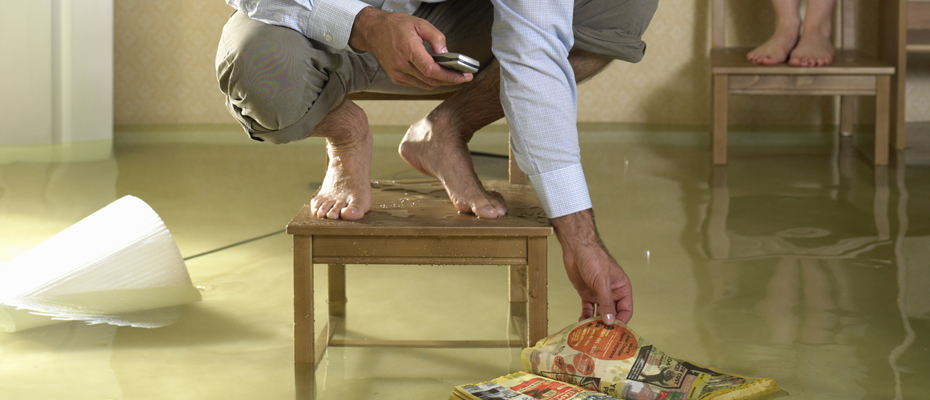 Water & Flood Damage
Water & Flood Damage
A water disaster, and the impending damage that follows, is no different. From a sink left to overflow to a broken pipe or clogged drain to the more serious appliance malfunction, damage from severe weather conditions or structural slab leaks, with a sudden release of water – your home or property could be flooded in an instant.At Mayday Construction, we understand that every second counts. Any delay in removing the water and restoring the affected areas could lead to more serious structural damage. This damage is progressive and only complicates recovery unless immediate and safe measures are taken by professionally trained water technicians. Using proven water removal strategies, we are committed to comprehensive water mitigation services and we understand the difference between effective restoration and time-sensitive reconstruction.
Our Comprehensive Water Mitigation Services include:
- 24-Hour Emergency Response
- Damage Assessment to Reduce Mold and Mildew Damage
- Clean-Up & Decontamination / Sanitation
- Water Extraction
- Drying & Dehumidifying
- Mildew & Odor Control
- Mold Remediation
- Customized Reconstruction
Our dedicated Professional staff immediately determines the extent of water damage. Water damage assessment is done by specialized tools that find water damage even when the surface is dry to the touch. Water damage that appears to just affect the floor will wick up the wall and create a mold breeding ground between the drywall, baseboard, Insulation and stud wall. Water damage should always be remediated by a qualified water damaged restoration professional.Mayday Construction writes a detailed water damage assessment and determines the best option to reduce any secondary damage. Secondary Damage that arises from a flood poses the most risks. If the structure is not dried properly there is a greater likelihood of mold problems.Your health is paramount and we understand that mold can cause any number of symptoms such as headaches, runny noses, rashes, allergic reactions, asthma, and fungal growth in the lungs, internal bleeding, and even death.
Classifications of Water Damage
Water Damage Category 1 – This is the most common form of water damage. Professionals refer this category to “Clean Water”. At first, this does not pose a threat to us but if the water remains a continued problem it can escalate to Category 2 and 3.
Common sources for this category are:
- Sink Supply Water Lines
- Dishwasher Supply Water Lines
- Refrigerator Water Lines
- Hot & Cold Supply Water Lines
- Sink Overflow from Faucet
- Water Heater or Supply Lines
- Furnace Water Overflow
Water Damage Category 2 – This water is accompanied by a foul smell and if tested, would contain elevated levels of contamination that would be harmful to us. Professionals refer this category to “Grey Water”.
Common sources for this category are:
- Failed Sump Pump
- Interior Dishwasher Water
- Overflowed Toilet
- Ice Dam
- Roof Damage
Water Damage Category 3 – This water contains armful contaminants (pathogenic microorganisms) and mold producing organisms. This water should only be treated by a professional water remediation technician and treated with extreme caution. Professionals refer this category to “Black Water”. If water from Category 1 was left for any length of time it can become category 3 and must be treated accordingly. This water can make you extremely sick and even lead to death.
Common sources for this category are:
- Any Standing Water
- Water with Fecal Matter or Urine
- Broken Sewage Lines
- Sewer Back-up
- Septic Tank Back-up
- Any Broken Drain Lines (PVC or Cast Iron)
- Any water from Lakes, Streams, Rivers, Oceans
First we handle the water removal and extraction. We then apply a plant based anti-microbial agent depending on the water source / category. Finally we deal with the proper drying and dehumidifying of your carpets, wood floors, ceiling, wall, basement, and crawl space dehumidifying.We are there with you every step of the way. We want to make your flood clean up as painless as possible. We also handle you insurance billing and we have our own adjuster. We will return things back to normal as they were before the flooding.
What to do if you ever have water damage:
- Use dehumidifiers in higher weather conditions (above 60 degrees).
- If a cool season, leave heat on; if in a warmer season, use air conditioners.
- Use fans to dry and circulate air.
- Mop and blot to remove as much water as possible.
- Lift wet fabrics (area rugs, draperies, etc) off carpet, place on a coat hanger, and hang on a coat rod.
- Prop up wet furniture cushions for drying and use wood blocks or aluminum foil under furniture legs.
- Dry furniture. Open furniture drawers, closet doors, and luggage to maximize drying.
- Move photos, paintings, and other objects to a safe and dry location.
- Remove damp books from shelves and spread out to dry.
Important warnings on water damage:
- Do not use a household vacuum to remove water.
- Do not use electrical appliances while standing on wet floors or carpets.
- Do not go into rooms with standing water while power is still on.
- Do not lift tacked down carpet without professional help, as this could promote shrinkage.
- Do not wait to call for professional help. Damage from the water and bacteria growth can begin within hours. Call Mayday Construction.
Flood Health Risks
Flood waters may contain potentially dangerous materials, such as fecal material from overflowing sewage systems, agricultural runoff, and chemicals from industrial areas. Wading in flood waters can also be a cause of infection or result in a variety of injuries.
Call Mayday – A Michigan Based Insurance Repair Specialist.